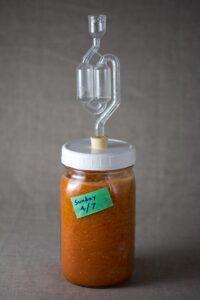Fermentation is an essential process in brewing, wine-making, and even food preservation. It involves the conversion of sugar into alcohol or organic acids by microorganisms such as yeast or bacteria. Different fermentation techniques result in unique flavors and textures, making it an exciting and challenging aspect of brewing. In this article, we’ll take a closer look at the different fermentation techniques and how to incorporate them into your brewing process.
Fermentation Techniques
Traditional Fermentation

Traditional fermentation is the most straightforward method of fermentation. It involves the introduction of yeast into a sugar-rich solution and allowing it to ferment for several days to weeks, depending on the type of yeast used. The yeast consumes the sugar, producing alcohol and carbon dioxide in the process. This method is commonly used in beer brewing and results in a relatively low alcohol content and effervescence.
Wild Fermentation
Wild fermentation is a technique that uses naturally occurring yeast and bacteria to ferment a solution. This method is commonly used in sourdough bread-making and the production of traditional fermented foods such as sauerkraut and pickles. The resulting product has a tangy flavor and a unique texture, which is created by the action of lactic acid bacteria that produce organic acids during the fermentation process.
Controlled Fermentation
Controlled fermentation is a technique that involves the introduction of specific yeast or bacteria strains into a solution, rather than relying on naturally occurring microorganisms. This method allows for a more consistent and predictable outcome, as the yeast or bacteria strains used are selected for their desired flavor and texture attributes. This technique is commonly used in wine-making and results in a more consistent flavor profile and aroma compared to traditional fermentation.
Spontaneous Fermentation
Spontaneous fermentation is a technique that relies on the presence of naturally occurring yeast and bacteria in the environment. This method is commonly used in the production of traditional Belgian lambic beers and is characterized by a more complex and unpredictable flavor profile. The yeast and bacteria used in spontaneous fermentation are selected for their unique attributes, and the beer is often aged for several months to several years to develop its flavor.
Accelerated Fermentation
Accelerated fermentation is a technique that involves the use of temperature and pressure control to speed up the fermentation process. This method is commonly used in industrial settings, such as the production of biofuels and animal feed, and allows for a faster and more consistent outcome compared to traditional fermentation methods.
In conclusion, the different fermentation techniques offer a wide range of flavor and texture outcomes, making fermentation an exciting and challenging aspect of brewing. Whether you’re a seasoned brewer or just starting out, experimenting with different fermentation techniques is a great way to elevate your brewing skills and create unique and delicious beers.
Keywords: Fermentation, Brewing, Alcohol, Sugar, Yeast, Bacteria, Traditional, Wild, Controlled, Spontaneous, Accelerated, Flavor, Texture, Consistent, Predictable, Complex, Belgian, Lambic, Industrial, Biofuels, Animal feed, fermentation techniques, type of fermentation techniques, using fermentation techniques
Check out our Novel Writing Workbooks
Check out Little Tree Food Forest for articles on food forests and homesteading.
Check out FoodieScapes for articles on growing, fermenting and preserving food
Check out StoryScapes.World for articles on writing.
Subscribe to our newsletter to get information delivered to your inbox on edible landscaping, growing food and medicinal plants, growing mushrooms, foraging, fermentation, food preservation, raising small livestock, and more.






